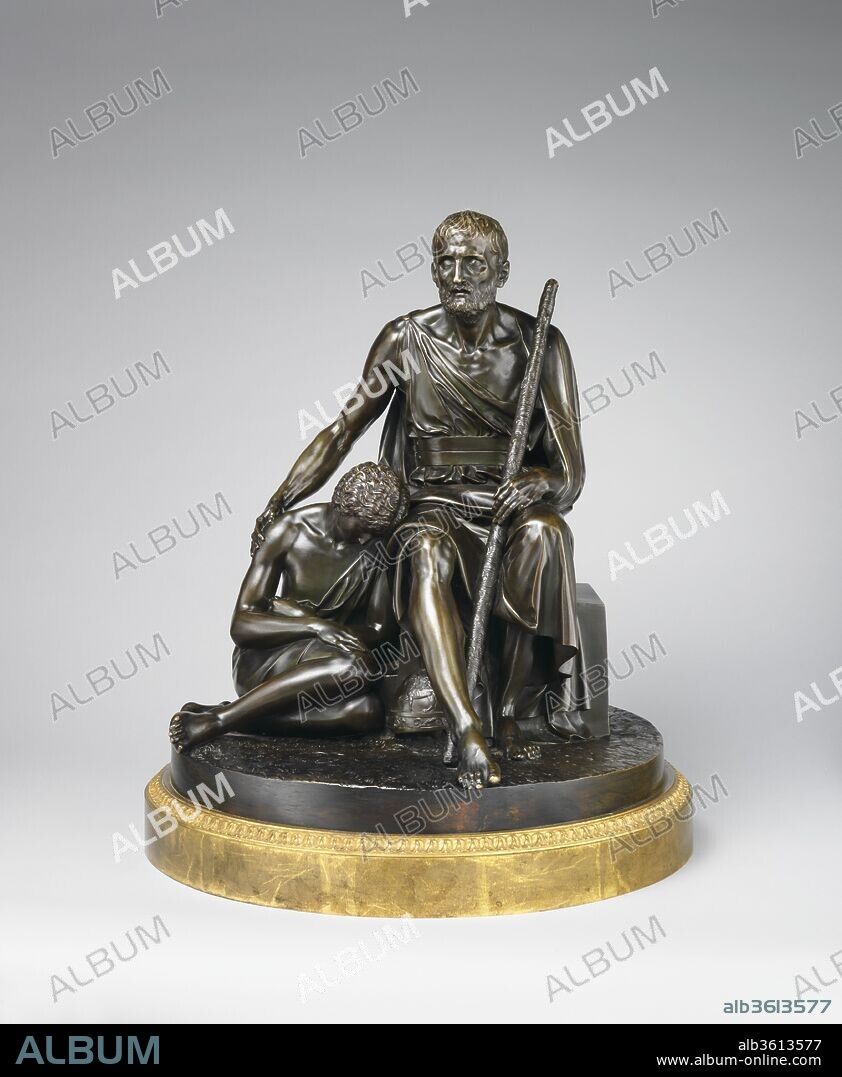alb3613577
ANTOINE DENIS CHAUDET. Belisarius and His Guide

|
Add to another lightbox |
|
Add to another lightbox |



Title:
Belisarius and His Guide
Caption:
Belisarius and His Guide. Artist: Antoine Denis Chaudet (French, Paris 1763-1810 Paris). Culture: French, Paris. Dimensions: H. 18 in., D. 14 3/8 in. (47.5 x 36.6 cm). Date: 1794.
The popularity of the victorious sixth-century Byzantine general Belisarius aroused the jealous wrath of his emperor Justinian to the point that he had Belisarius imprisoned, then blinded and turned loose to beg for his living. Antiroyalist elements in French society found parallels in the court of Louis XVI, which was coming under increased criticism. When the terracotta model for this group was exhibited at the Salon of 1791, the sentimental Neoclassical public surely relished its pathos and the contrast between the forms of the sightless but ever-proud mendicant and his weary young guide. The quality of the bronze's chasing led early commentators to suppose Chaudet carried it out himself, but more likely he turned to a professional foundry for the expertise needed to give the metal its dazzling range of surfaces. The Neoclassical age sometimes had unexpected kinetic moments: fitted within the unpatinated base is the original turntable on which the group can be revolved so as to be appreciated from every angle.
Technique/material:
Bronze, mounted in a bronze circlet with floral ornament painted to resemble gilt bronze, into which is fitted the original rotating mechanism
Museum:
Metropolitan Museum of Art, New York, USA
Credit:
Album / Metropolitan Museum of Art, NY
Releases:
Model: No - Property: No
Rights questions?
Rights questions?
Image size:
3453 x 4200 px | 41.5 MB
Print size:
29.2 x 35.6 cm | 11.5 x 14.0 in (300 dpi)
Keywords:
ANTOINE DENIS CHAUDET • ARTFORM: BRONZEWORK • BRONCE • BRONZE BRASS • BRONZE • BRONZE, MOUNTED IN A BRONZE CIRCLET WITH FLORAL ORNAMENT PAINTED TO RESEMBLE GILT BRONZE, INTO WHICH IS FITTED THE ORIGINAL ROTATING MECHANISM • BRONZES • COPPER ALLOY • EUROPE • EUROPEAN SCULPTURE AND DECORATIVE ARTS • FIGURINES • FRANCE • GILT • METAL • METROPOLITAN MUSEUM OF ART, NEW YORK, USA • PAINTING • PARIS • SCULPTURE • SCULPTURE-BRONZE • STATUES
 Pinterest
Pinterest Twitter
Twitter Facebook
Facebook Copy link
Copy link Email
Email

